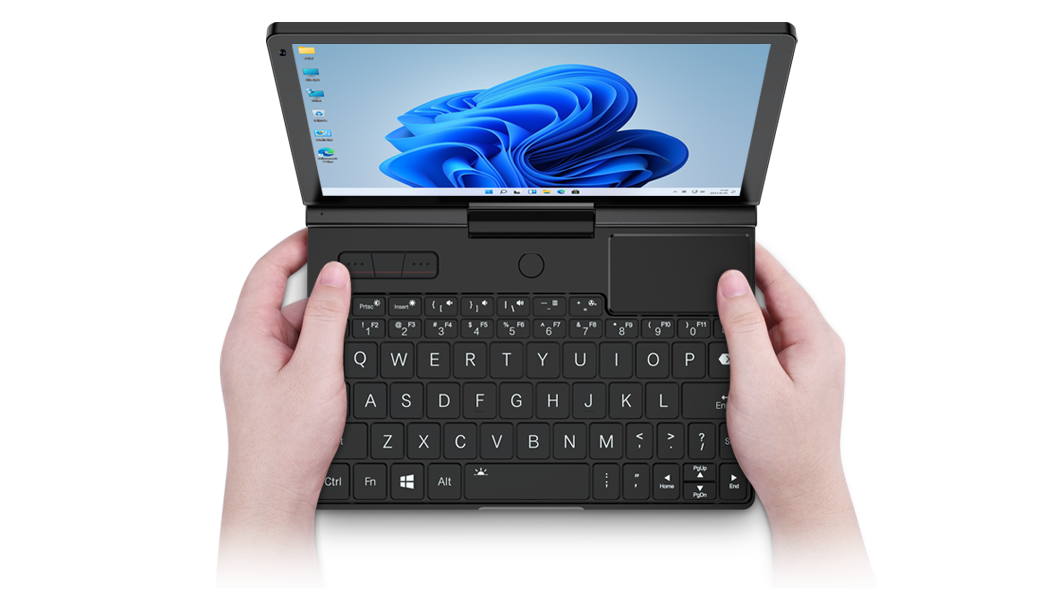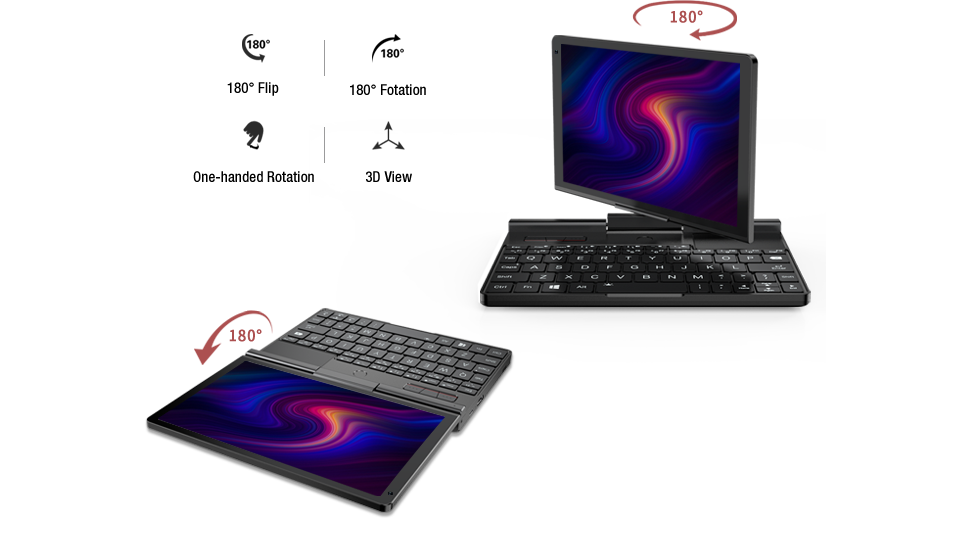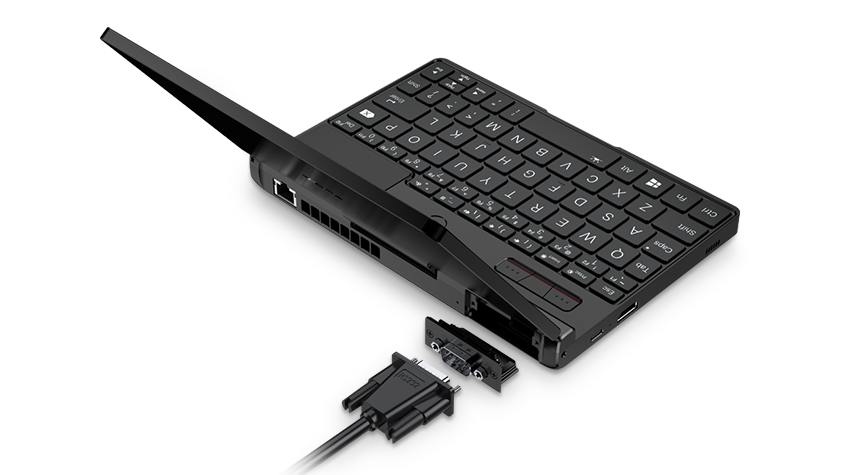GPD’s New Handheld Has a 96-EU GPU and a Ton of Ports
GPD has made yet another Kickstarter for a new handheld PC called the GPD Pocket 3. Unlike most of GPD’s devices, this device is made for both gamers and professionals alike.
The handheld is a compact laptop with an 8-inch, 1920 x 1200 screen and includes a full QWERTY keyboard and stylus support, along with a plethora of connectivity options including Thunderbolt 4 support. It's currently in the prototyping stage of the Kickstarter, with no word yet on when production will start.
The goal of the Pocket 3 is to cram as much utility and modularity as possible within a small 8-inch form factor. GPD notes that it wanted to make a new handheld that had all of the best features of its previous Pocket 2 and MicroPC handhelds, as well as it P2 Max ultrabook crammed into one device. This has led to the Pocket 3 having a surprising amount of connectivity and flexibility that you rarely see in other compact devices.


The core hardware options are quite powerful, with an option of an 11th Generation Core i7-1195G7 with Intel Iris Xe graphics, up to 16GB of LPDDR4x-3733 RAM and up to a single 1TB M.2 NVMe SSD. Alternatively, you can also choose a cheaper model that includes a Pentium Silver N6000 CPU, 8GB of LPDDR4x-2933 RAM, and a 512GB NVMe SSD instead at presumably much cheaper pricing than the i7 model if the Pocket 3 comes to market.
What is perhaps the Pocket 3’s most useful feature is its modular I/O port to the rear, which is capable of giving you two very specialized ports that are useful for IT work. The first port is a standard RS-232 communication port that looks very similar to a VGA port (but shouldn’t be confused with one). This port allows you to connect to PDAs, scanners, barcode printers, and more for troubleshooting or deployment purposes.

The next port is a KVM module that houses both an HDMI In port and a USB In port for connecting the Pocket 3 to another computer or server for controlling that system remotely. This could be useful in the IT world where you need direct control over a headless server that does not have a physical keyboard, mouse, or monitor attached to itself.
Besides the highly flexible module port, the Pocket 3 also comes with three USB 3.2 ports and a single HDMI 2.0b port. If you grab the high-end model, you’ll also get a full-blown Thunderbolt 4 port capable of supporting displays of up to 8K resolution at 60Hz. If not, you’ll get a Type C port instead with DisplayPort capabilities of up to 4K 60Hz. There’s also a single 2.5Gbps ethernet port at the rear for internet connectivity.
GPD says the Pocket 3 is capable of up to 8.5 hours of battery life on average, thanks to its built-in 38.5 WHr battery pack. It’s also capable of 45W fast charging and can be charged with power banks if need be.
Get Tom's Hardware's best news and in-depth reviews, straight to your inbox.

Aaron Klotz is a contributing writer for Tom’s Hardware, covering news related to computer hardware such as CPUs, and graphics cards.
-
Alvar "Miles" Udell $1050 for the base i7 model or $700 for the base Pentium model according to the Kickstarter pricing...That's a pretty steep price to ask, though it is a very specialized product.Reply -
I like this device. Pretty sleek, compact, and very convenient to use as well, but it appears to be expensive. But this was expected since this device packs a lot of good features, in such a small footprint.Reply
-
eldakka1 I like the video-in capability.Reply
It's always baffled me why this isn't a standard feature on all laptops, as you have a monitor, why not provide an extenal video-in as well so can use it with other devices ...